After having been long intrigued and impressed with Zoey Frank’s paintings I recently asked her for an interview. I would like to thank Ms. Frank for agreeing to this email and Skype interview and taking the time out from her busy schedule. You can listen to the podcast version (completely different than the text version seen here) from the link below and at the end of this printed interview.
Streaming version
Zoey Frank is a Colorado based painter who shows at the Haynes Gallery, both in Thomaston, Maine and Nashville, Tennessee. She is having a solo exhibition of her work in Maine starting this week and also in October 2016 in Nashville.
Frank received her MFA from the Laguna College of Art and Design in 2014 and studied at the Juliette Aristides Atelier at the Gage Academy of Art in Seattle 2007-2011. Frank recently was awarded the Avigdor Arikha Memorial International Residency Scholarship for 2016 from the JSS in Civita. She was awarded First Place in the Manifest Gallery 5th International Painting Annual in 2015 along with many other awards and honors.
Larry Groff : I’ve read that you’ve wanted to be an artist since a very young age, please tell us a little about how you got started with becoming a painter.
Zoey Frank: I spent a lot of my time as a kid drawing and making things. I was an only child and was content entertaining myself at my craft table for long hours with an audio book set on repeat. In 7th grade we had a unit on the Italian Renaissance and I decided that I wanted to be an artist. I took a drawing class the following summer and then tried to learn as much as I could through high school, duel enrolling in the local public school which a had a good art teacher while attending a performing arts Waldorf School. I intended to major in art at a liberal arts college to get a more well-rounded background, but all I really wanted to do was paint so I ended up leaving and finding my way to the Atelier.
LG: You went to an atelier instead of a university based art school, where you studied the figure with Juliette Aristides in the Classical Atelier at Gage Academy of Art Can you tell us something about your experience there? What are some of the pros and cons of not going the traditional route to learn traditional techniques?
ZF: I loved my time in the Atelier and learned a tremendous amount from Juliette. I wanted to learn traditional skills as a foundation for whatever work I might do in the future, and I was able to get those skill there. The structure of working from the model everyday, learning to draw first, and then progressing to painting worked well for me. The skills are invaluable, but it is easy to get stuck in them. I knew from the beginning that I didn’t want to do Atelier-method painting in my own work, but I’m still in the process of finding my way now. Since graduating from the program I have been working to free myself from the training through through experimenting with different approaches to making the work. I was also only familiarized with a very small niche of the art world and am still trying learn more about the bigger picture.
LG: You then got your MFA at the Laguna College of Art and Design in Laguna Beach, California. Anything you can share about this program?
ZF: Getting my masters degree after the Atelier turned out to be extremely helpful for me, receiving input from a larger group of professors after training with one artist, and working alongside students coming from more conceptual backgrounds helped me question my process and what I wanted out of a painting. I was introduced to a lot of different work than what I had been looking at before, and it was an extremely supportive environment to try out new things and begin to find my own process.
LG: You stated previously that:
“I didn’t wait to launch my career. I’ve heard advice to the contrary, but I chose to make my art publicly available as it was created rather than waiting until I had a body of work fully established. The art sales helped pay for my education, and I graduated with gallery representation, publications, and a livable income already established. I’ve said yes to almost every opportunity that has come my way.”
So you are less apt to worry about the notion that an early success with galleries might make you less willing to experiment with new approaches and subjects?
ZF: I have definitely been worried about that—I hope that my concern will keep it from happening. Haynes Galleries has been extremely supportive and accepting as my work has changed fairly dramatically over the last few years, and I hope there will continue to be places to show my work whichever way it develops. I’m trying to hold in my mind that progressing towards doing the best work I can make is the most important thing. It does feel vulnerable to have all my experiments out there in the world for everyone to see. I feel a lot of uncertainty about many of the paintings I’ve made, but I’m trying to just accept them as all part of my progress of development.
LG: Your recent work appears to move away from your more classical training to follow a branch of modern representational painting that is both painterly and meticulously observed. You seem to be engaged with the pictorial concerns, composing the underlying abstraction as well as making something with a strong emotional presence.
What are your thoughts about strong classical atelier training for aspiring figurative painters? How do you respond to the prevalence of art world rejection of academic technique in painting?
Thanks—I’m glad the work reads that way! I think that you need to learn to paint to be a painter. I don’t know if Ateliers are the best way to learn because it is so easy to be seduced by the technique or by a specific aesthetic, but you do learn to draw and paint and that’s invaluable. Work that looks overly academic isn’t as interesting to me now either, so I guess I’m agreeing with the current art world there a bit. I’m not as comfortable rejecting things though—I still find some academic work to be incredibly beautiful and inspiring.
LG: In a 2014 interview you stated that your:
“… current body of work is inspired by a collection of unaffiliated observational painters whose works share several characteristics. This list includes Antonio Lopez Garcia, Euan Uglow, Anne Gale, Sangram Majumdar, and Eve Mansdorf, among many others. These realist painters all work exclusively from direct observation over an extended period of time, and the earnest searching quality of their process is evident in the finished works. This process of encountering visual phenomena, responding and recording the encounter in paint is the focus of my current work. The artists I’ve mentioned look at the world through modern eyes. The work is all representational, meticulously and accurately observed, and yet each artist codifies visual phenomena into a personal language that is his or hers alone. None of the work looks photographic. The images are distilled in a way that no camera could capture.”
Some traditional-minded painters paint subjects and styles that can seem archaic.
Why do you think it’s important for observational painters to be of one’s time and to see the world with modern eyes?
ZF: Ateliers have sprung up in response to the universities not teaching traditional painting techniques, which fills a needed gap, but can include a view that modernism was something entirely separate from the stream of painting that came before. Some ateliers are trying to pick up where the French academies left off and ignore the the last 150 years or so. This makes me uncomfortable. I am living and working today and my work will naturally reflect the influences around me. It’s an odd choice to make anachronistic paintings. I don’t think paintings need to include the latest gadget or something like that, but I want the lighting, the composition, the formal pictorial concerns to influenced by modernism and contemporary life while strongly drawing on all the rest of art history.
LG: How much is technique important to you?
ZF: The technical side is extremely important to me as long as it is in service of the painting. I first and foremost want to make good paintings and I think that technical understanding is necessary for that but the technique can also get in the way. I don’t want to be applying a systematic technique throughout the painting and produce a slick finished product. I want to be responsive and engaged with the work by using all technical tools I’ve acquired as needed for each painting. I want to be willing to do whatever it takes to make the painting happen.
LG: Do you draw regularly separate from your painting?
ZF: I was at the Capodimonte museum in Naples a couple weeks ago and spent some time looking at a few large fresco cartoons by Michelangelo and Raphael which made me all excited about drawing again. I’ve spent the last few years exploring different ways to make paintings after leaving the atelier system, but I’ve just continued to do careful figure drawings with the same approach I developed during the training which doesn’t feel natural to me. I think it would be helpful to my work to explore drawing in ways that are more my own and are more responsive. Drawing large like those cartoons feels like a good place to start.
LG: How much do you prepare for a painting before starting?
ZF: This varies a lot right now. I do some paintings without any preplanning on un-stretched linen and then add and remove elements, and crop or expand the compositions as needed to find the painting as I go. Other images are planned out from the beginning, but significant changes might still happen. I think planning enough to try and decide on the dimensions of my surface from the start might be a good idea for me moving forward. I like the process of working things out during the painting though. I like how it complicates the surface and I like how I feel engaged with the entire painting the entire time.
LG: I was struck by the incredible transformations your painting went through in your Girl in Striped Shirt video You keep everything open and up for grabs until the last minute. What decisions go through your head when making these changes? What helps you determine the painting’s completion?
ZF: This video isn’t quite representative of my regular process because I deliberately wanted to let more changes happen and build a scene by adding elements and taking them away. I do change things a lot though, and this project helped free me up even more to do that. I like responding to the painting and the adding things to balance the composition, trying things out as they occur to me. I considered taking this painting all the way back to white at the end or just leaving part of the desk but I kept the one figure in the end because I wanted there to be a bit more content there. Now I wonder if it might have been interesting to leave a different part of the painting to resolved rather than the in the finished piece.
I’m still struggling to figure out when a painting is done—mainly I tend to wear myself out, feel like I reach a place of diminishing returns where the painting has settled into what it is and won’t be improved much no matter how much more time I put in. There are things that I like about it, it feels balanced and gets at the feeling I was thinking about when I started. Then I try to take whatever underlying problems couldn’t be resolved and work them out in the next painting.
LG: The orchestration of values and the quality of space and light are truly remarkable in your recent Kitchen painting. Was this a direct painting from life? How did you go about making this picture?
ZF: I started the painting from life on a piece of un-stretched linen working in the small space of the kitchen in my apartment in San Jose. After I established the space I took photos of friends to incorporate the figures. I added a second strip of linen to extend the length of the floor, mounted both onto a panel and continued working on the painting in my studio. I have a tendency to fixate on figures and faces when I’m working and as viewers we tend to see the figures first as well. I wanted to make a painting where the figures are set into the overall space to slow down the reading of the image. It was hard for me to simplify the shapes down and get the value and color relationships to be close enough that the figures don’t dominate. Near the end I remixed the colors and scraped the paint over the rough surface with a knife to unity and simplify the shapes down even more.
LG: Parade is an amazing painting and different than many other works you’ve done. This is an enormously compelling painting. What can you say about why you painted it? Are you interested in painting more pictures like this? Please tell us something about how this picture came to be?
ZF: When I was studying in the Atelier I lived in the Fremont neighborhood of Seattle where they have wild solstice parade each year. At the same time I was learning how to carefully paint a single object lit by a single light source, and I remember sitting at the edge of the parade and wondering how I would ever translate the studies I was doing into being able to capture something like this—an energetic, scene full of activity and different emotions happening all at the same time. After I finished my MFA I had a studio with one long wall that had even light across it and I tacked up this large piece of linen for awhile before I started the painting. This image is entirely put together from found images on the internet. I did some drawings and a color study to work out the arrangements of figures and a lot of changes happened on the surface as well. I like working large and enjoyed the challenge of trying to make a complex image come together, but I don’t know if I will make more pictures quite like this again or not.
LG: Your large White Bed, 2016 Oil on linen, 55″ x 76″ is among my favorite of your paintings. Your poetic use of tone, like how the man and woman’s legs merge where they touch but the tones gradually warm and become alive the further away from the man it gets, conversely the closer to it gets to the man it becomes statuesque and cold. How your figures combine and dissolve into the white bedding and curtains is truly remarkable. Please say something about what all went into the creation of this painting?
ZF: For this painting I used pictures I took at the Musee d’Orsay of Jean–Joseph Perraud’s sculpture Despair for the male figure and pictures I took of a friend who very agreeably let me cover her with white body paint to modeled for the female figure. I did some small gouache studies and tried to maintain more of the planes and simplified strokes that the gouache lends itself to in the finished oil painting. Painting in whites is a such a pleasure because it is all about temperature relationships.
LG: Along with your bigger figurative works and still lifes you’ve made many smaller landscape paintings, presumably from life. Is outdoor landscape painting something you want to pursue along with your larger studio and figurative work? What can landscape painting offer for figure painters?
ZF: So far I’ve only been doing landscape when I travel. I’ve been trying to travel as much as I can in the last few years, particularly to visit museums and I don’t want to stop painting while I’m there. I also like getting to experience a place that way, rather than spending the whole time running around and seeing all the sights I get to know a particular corner very intimately.
I want to try new subjects and approaches because I think it informs everything I do. I like dealing with change in my subjects—working with the live model shifting in the pose and even in my still lifes I feel compelled to move things around rather than setting it up and then painting it. Dealing with the light shifting across the landscape is tricky. I like that it forces you to focus on making a painting— there is no pretext that you are copying reality because it shifts so quickly. The painter is building a fabrication from those careful observations of relationships. Landscape is also a good way to focus on color, because the drawing doesn’t need to be as accurate as in the figure and the color relationships have to be right to make the paintings work.
LG: You were painting landscapes in Spain and Israel I think. You also attended a residency in Civita Castellana, Italy this summer and won the JSS in Civita’s Avigdor Arikha Memorial International Residency Scholarship, 2016. How was your experience there? Can you show us some examples of work you made there?
ZF: I had a wonderful experience in Civita this summer. After finishing my MFA 2 years ago I’ve been working almost entirely in isolation in my studio. It was extremely helpful to get to be a student again and be in a community of dedicated painters. Israel Hershberg, and Susan Lichtman were both very generous in giving critique. Working from observation after some of these large composite images I’ve recently completed was re-grounding for me. Seeing the Piero della Francesca paintings and the early frescos from Pompeii that we visited in Naples made a huge impression. I’m excited to get back into the studio now and try to integrate some of the ideas I was thinking about on the trip.
LG: Painting is mainly about visual concerns that aren’t easily translated into words. Despite this, occasionally someone writes something intelligent. What book or article have you read recently that was particularly meaning for you?
ZF: I really enjoyed “Looking at the Overlooked: Four Essays on Still Life Painting” by Norman Bryson. I had originally found still life to be a bit boring compared to the figure, but a couple years ago I realized that I could paint still lifes without setting up the composition first—rather by adding and removing elements, and it became much more alive for me and also helped me to focus more directly on pictorial concerns. I read this book at the same time I was figuring that out and got very excited about still life.
LG: You’re having an exhibition of your work in Maine soon can you tell us something about this show?
ZF: I’m having a show in Maine with Haynes Galleries, opening August 19th and then traveling to their location in Nashville on October 7th. The show includes most of my work from the past two years and continues some of the themes I was thinking about from the previous show, including some portraits done from life and also looking at things changing–like tracking the lemon tree as it’s growing. I also have some larger, more narrative paintings this time which is a challenging subject but something that I keep coming back to.
When I was in graduate school I was trying to get away from the narrative but now I’m approaching narrative again and thinking about the problems of painting narratively at the same time. I was talking to Israel Hershberg about that this summer, that the narrative can take over the painting very quickly and cause you to get away from the formal aspects, which is what I’m most interested in. When I’m looking at historical paintings I love multiple figure compositions but I think I’m more interested in the relationships of those figures together on the surface than I am in the actual story that they happen to be telling. Moving forward I want to take this strong impulse I have to tell stories and find a language to paint in where the narrative sits a bit further back in the reading of the image.
LG: I think that’s interesting because the history of painting has largely been about storytelling, that’s why the pictures were made. If it wasn’t for the story-telling no one would have been likely to commission the painting or the artist would have been unlikely to have ever made the painting. Today it’s a similar situation. Even though many painters today can often be more interested in the formal aspects the galleries, museums, collectors and critics are often more interested in the storytelling because that makes it more readily accessible to the general public and those who aren’t as engaged with the painting’s underlying structure and purpose.
Streaming version

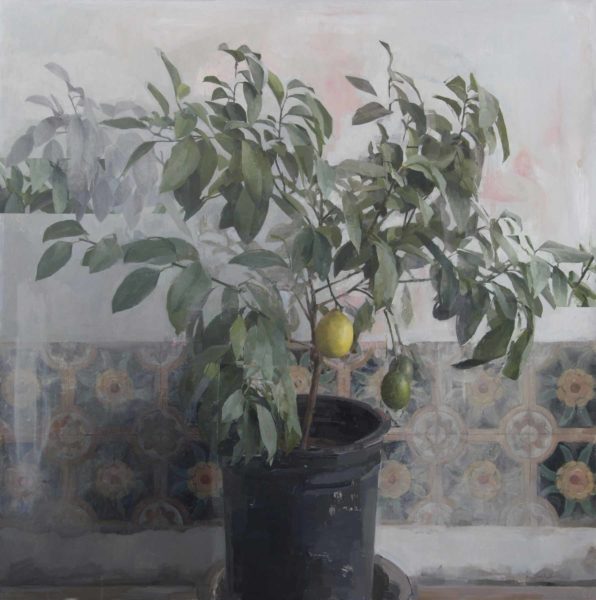
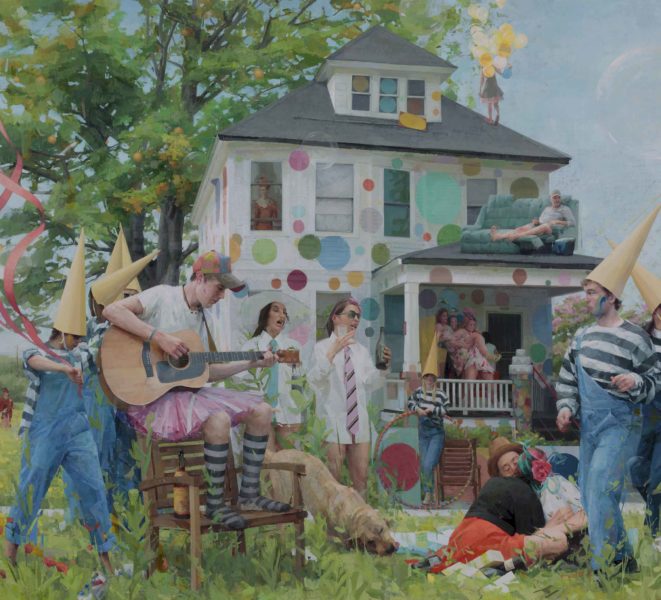
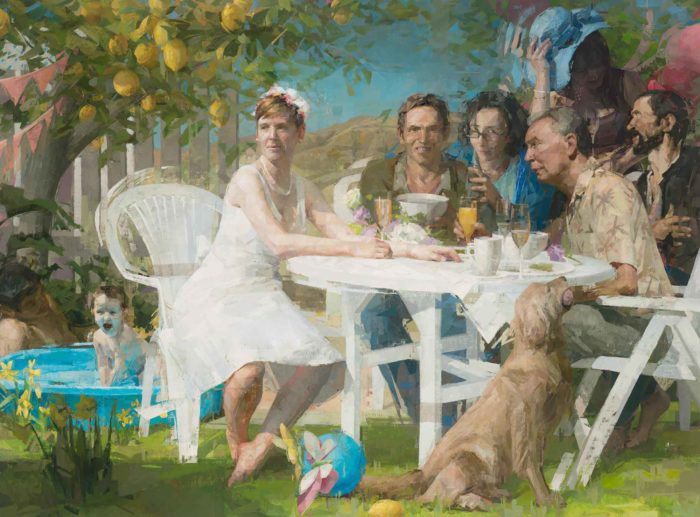
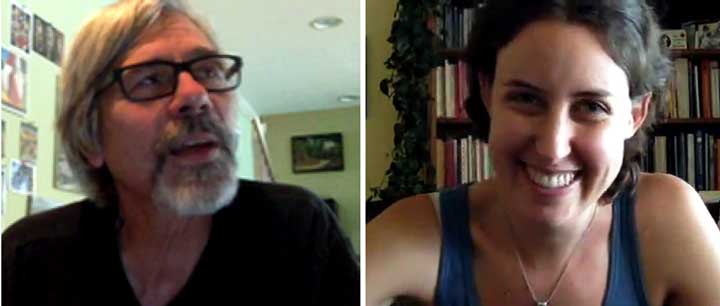
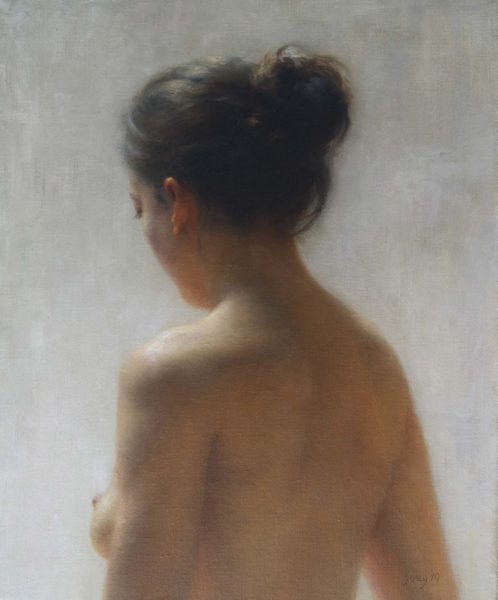
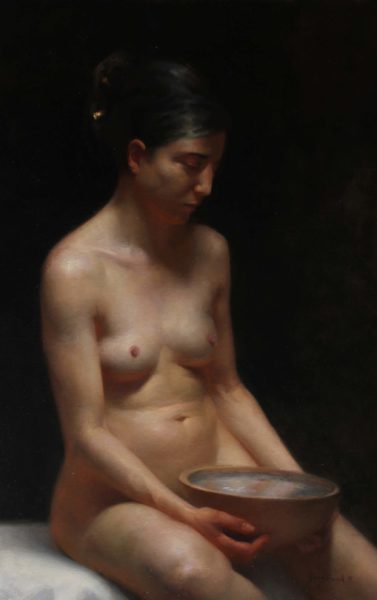
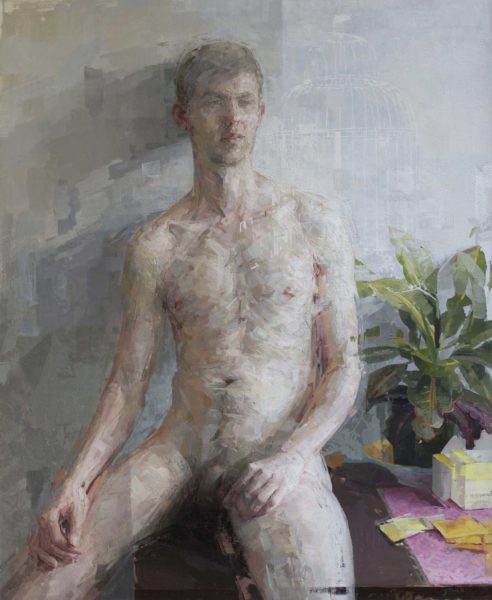
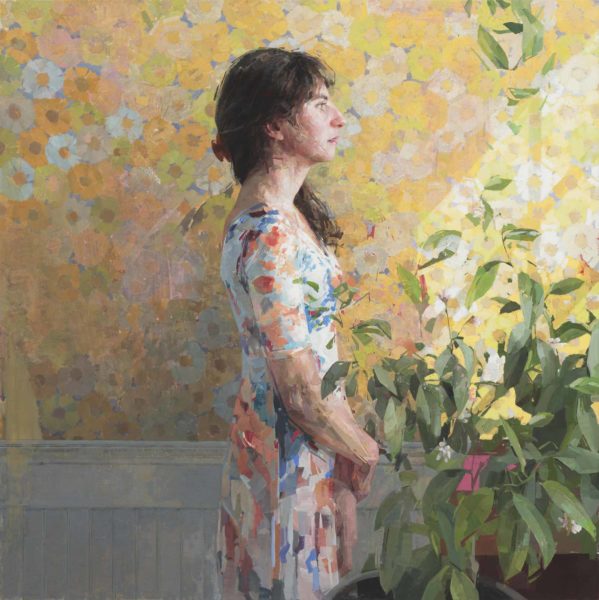
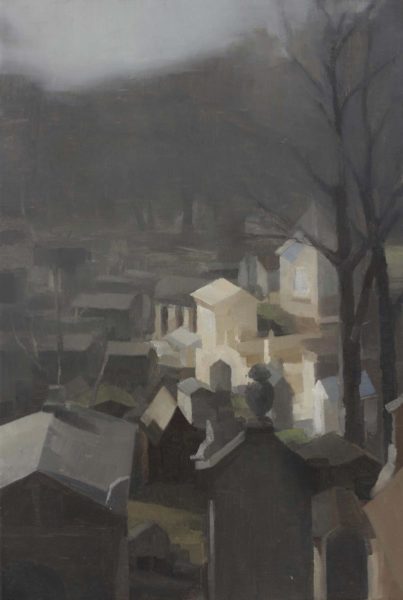
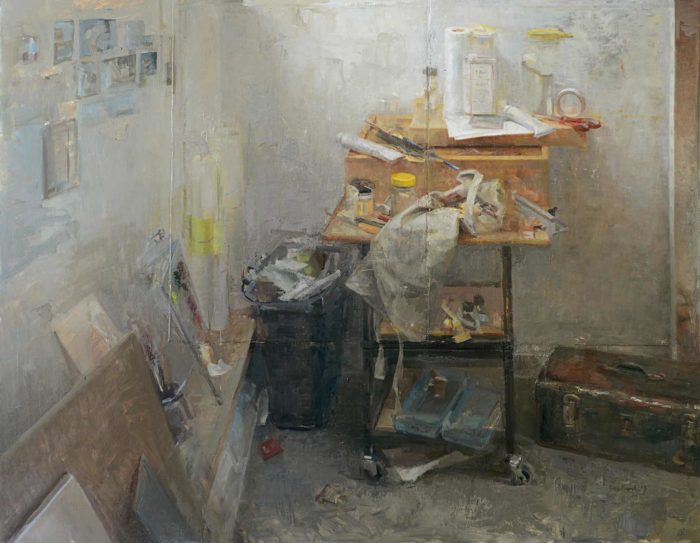
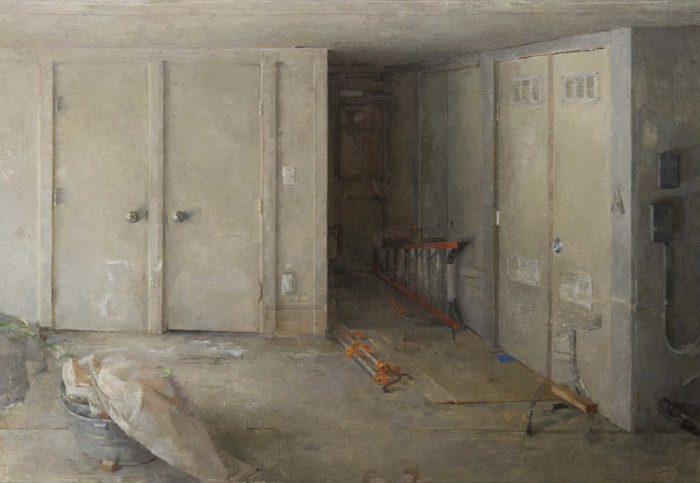
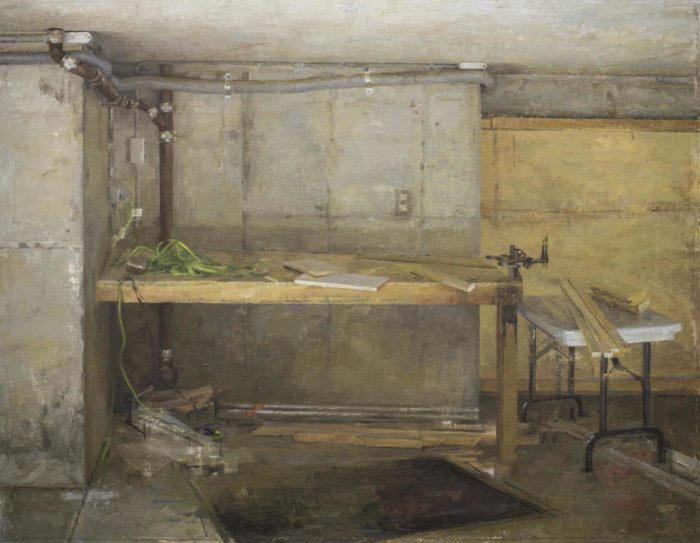
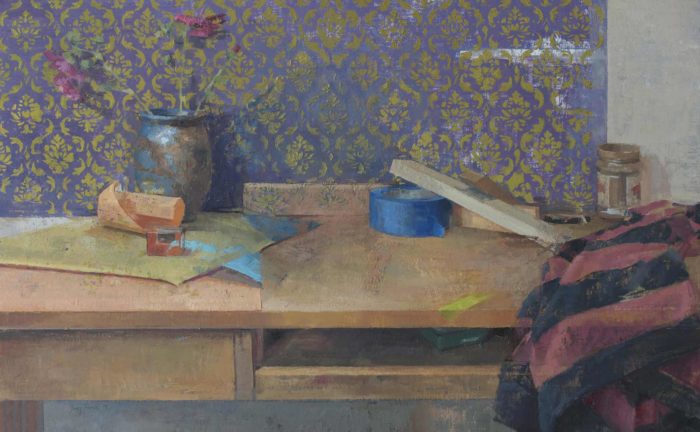
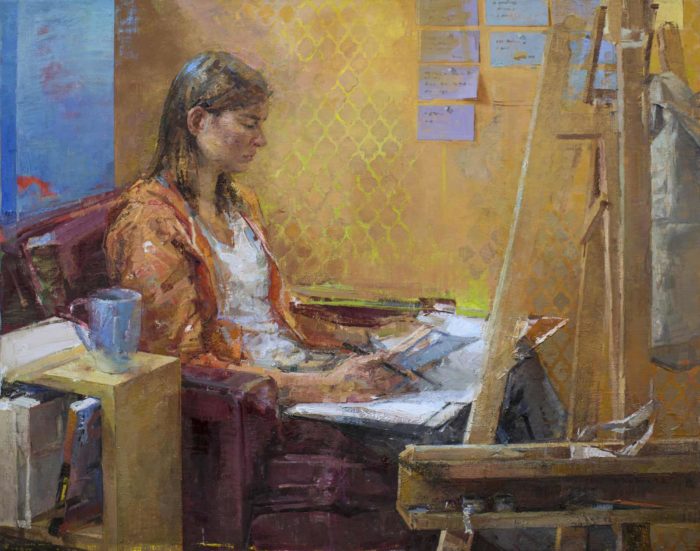
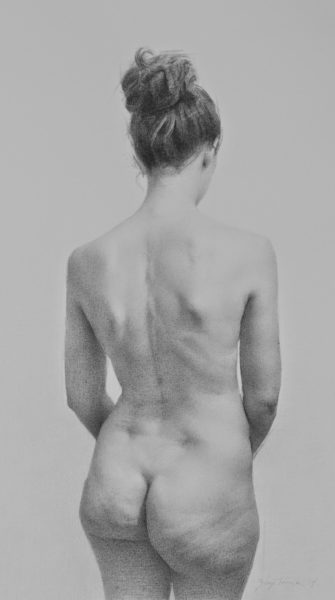
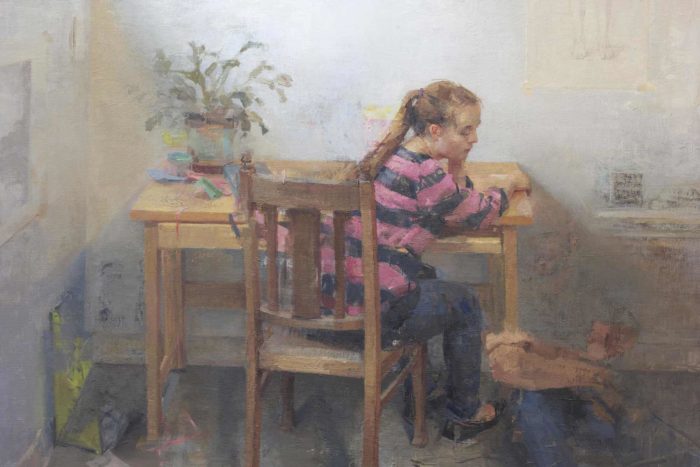
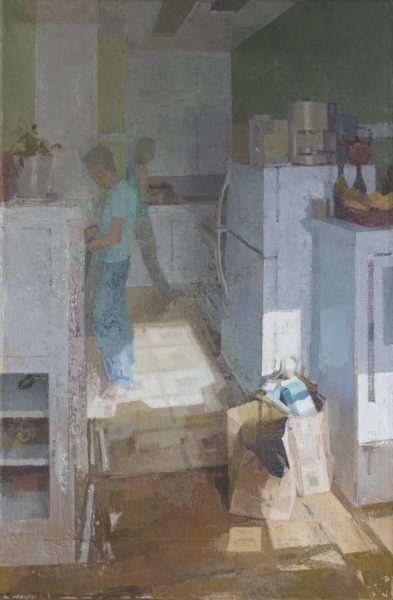
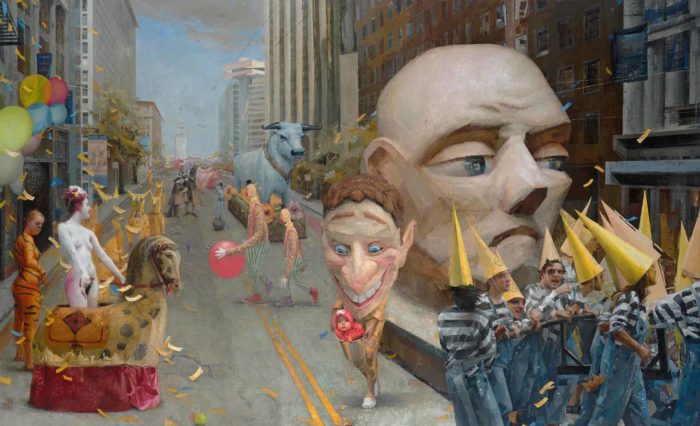
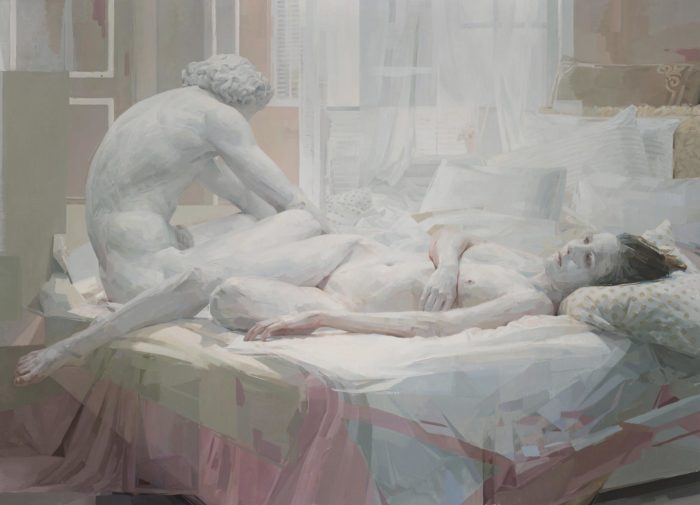
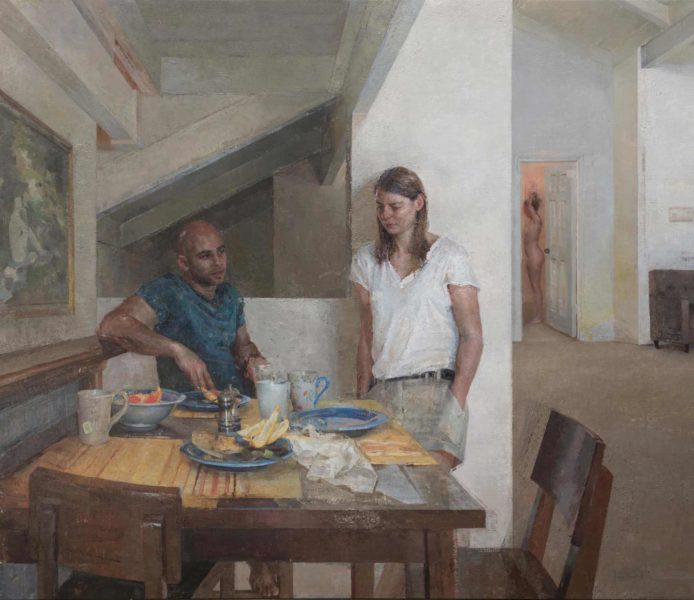
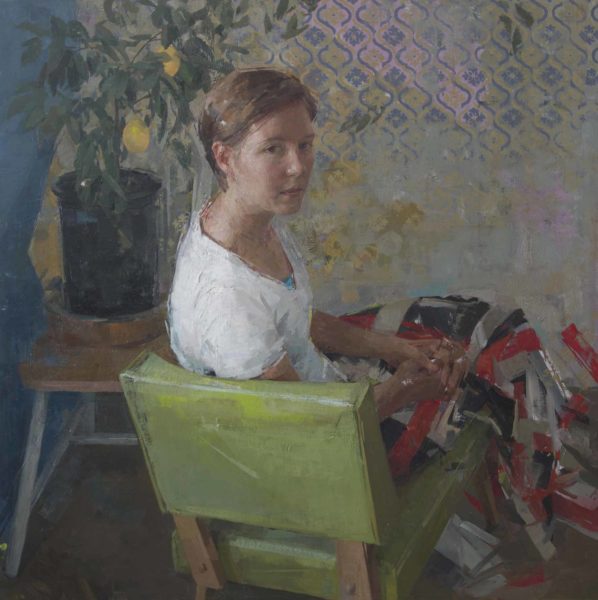
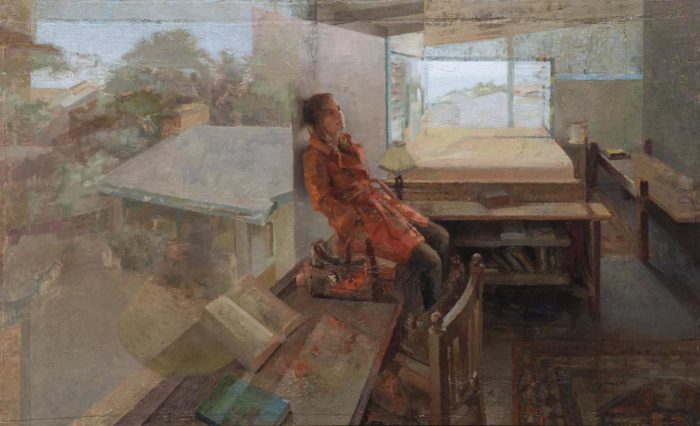

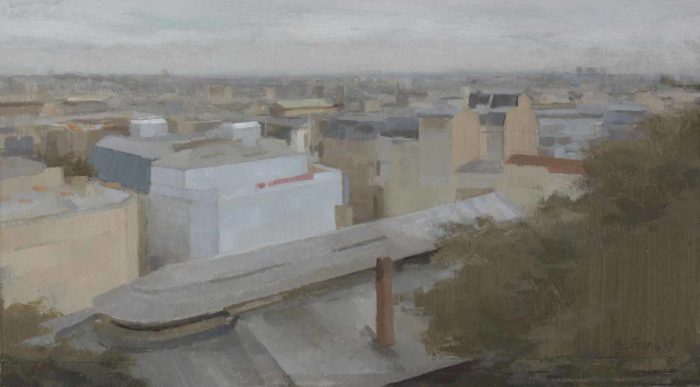

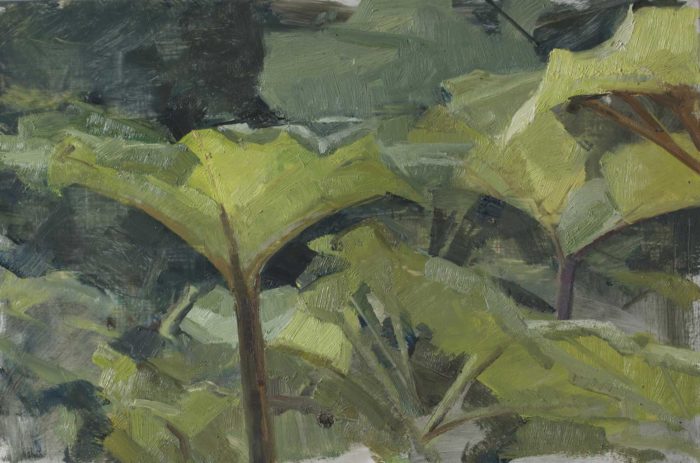
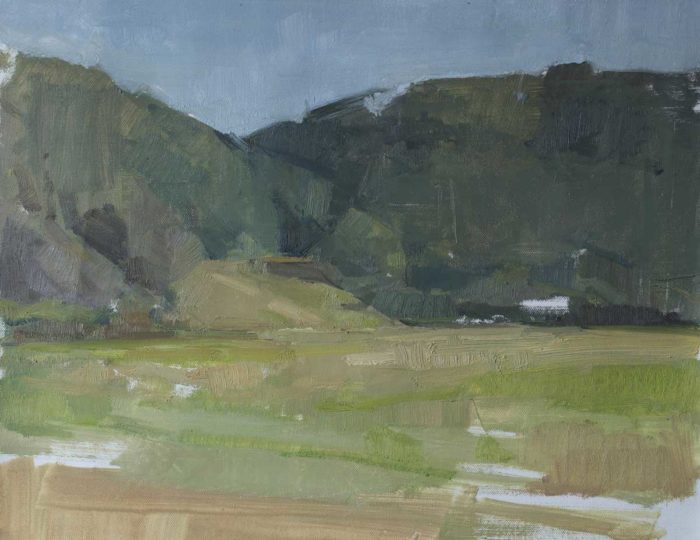
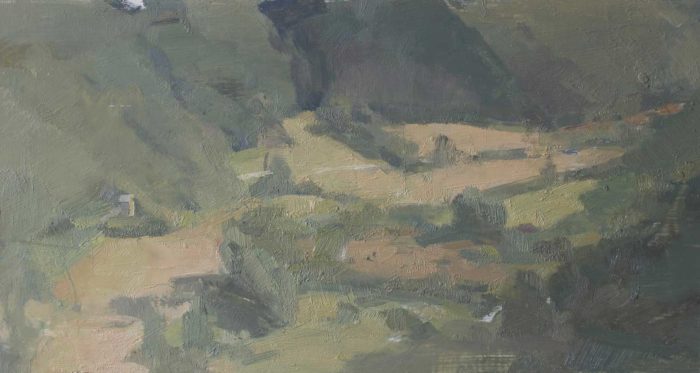
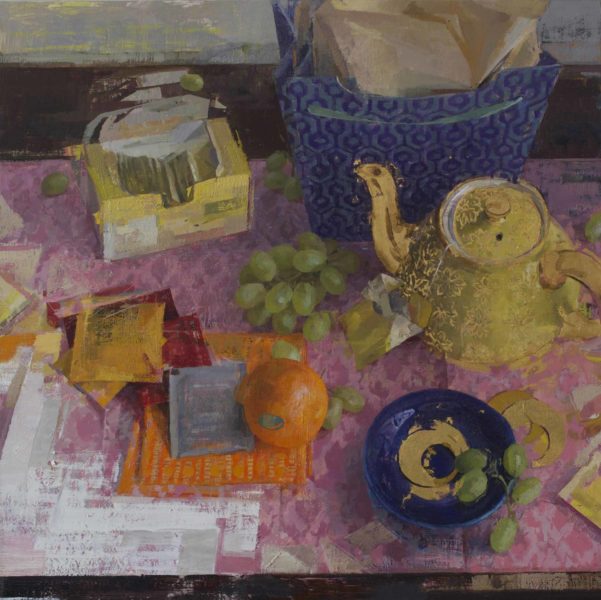
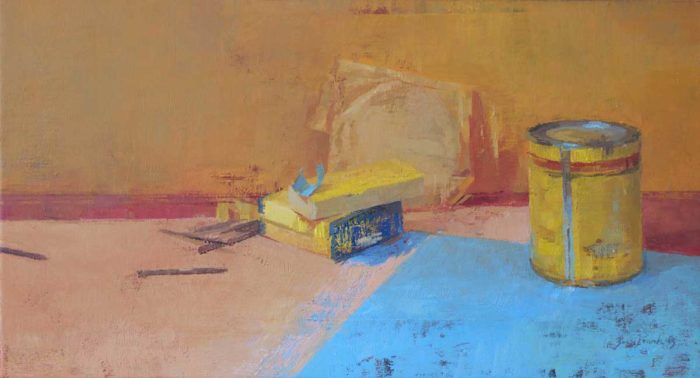
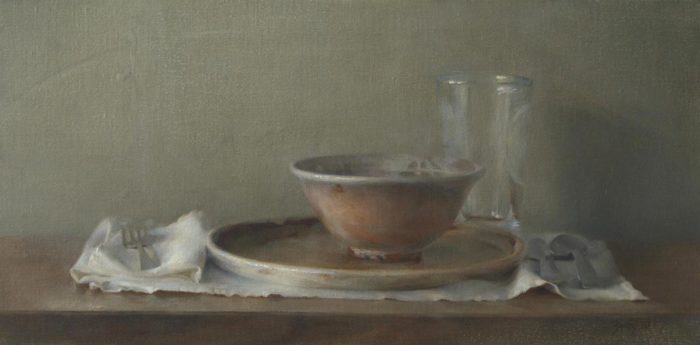




enjoyed the images and podcast
What a lovely article. What a talented painter. The finest overall single collection of a contemporary painter’s paintings that I have ever seen. Zoey Frank is already a young master. Delicious, simple, sophisticated, elegant – a real treat. And you know she’s even going to get better! Makes me want to live a little longer.
Thank you for this excellent and informative interview of one of my favorite artists, Larry. And I appreciated your comments on narrative painting relative to her compelling work. I am thrilled to know Zoey has an upcoming exhibit this October in Nashville and I will most-certainly be there!
Thanks for introducing me to this painter, Larry. Her take on narrative painting is very thought-provoking. Fun to see that Velasquez reference in the ‘Brunch’ painting.
Larry, I thoroughly enjoyed your thoughtful interview with Zoe. It was great to learn more about her artistic development and concerns…thank you for offering us this!
It has been fascinating to watch her rapid development into an artist with a rich and very personal language; pure perceptual painting combined with narrative painting, so difficult to do today.
She is the kind of painter who always makes me want to reach for my brushes.
Thank you very much for this article Larry, lovely to know more about what moves when she paints and see more of het work. She’s a great painter and I’m curious to seemore of het work in the future.